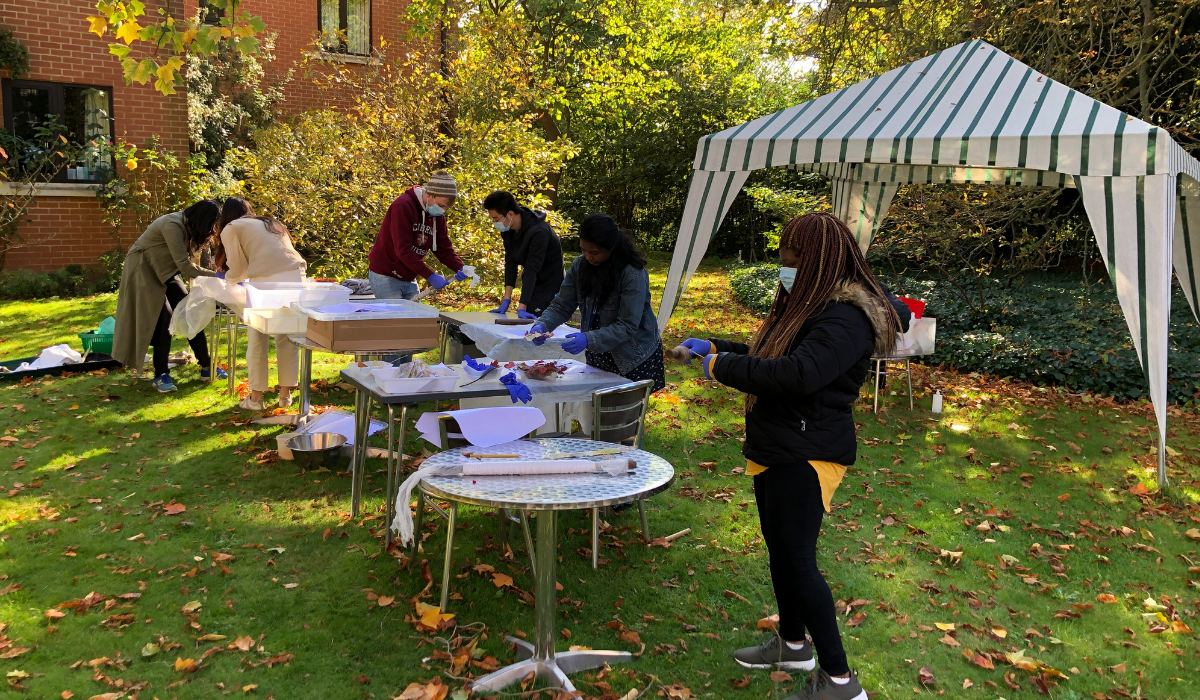Students enjoyed using a technique called Eco-printing in the College gardens
Eco-printing is a technique where plants, leaves and flowers leave their shapes, colour, and marks on fabric. Plant material bundled inside a cloth is steamed or simmered to release the dye found naturally inside the plant, creating a contact print in the shape of the leaf or flower used. These contact prints are referred to as “eco-prints.” Autumn leaves placed between paper or fabric and simmered in a bundle make beautiful watercolour or print-like effects using this technique.
As part of the student well-being programme, Lucy fellow Dr Jane Goodall ran a botanical printing workshop in the College gardens last Sunday.
Students could experience the essence of Autumn and craft a unique piece of art in the setting of our beautiful gardens. All materials were provided as part of the workshop and students could drop in during the session or email Dr Goodall to secure a printing slot.

Autumn leaves from Japanese Acers, Rose, Liquid Amber, Cotinus (smoke bush), Oak, Red Cherry, Virginia Creeper and many more were sourced and foraged from multiple locations around Cambridge. Students chose from the abundant leaf buffet to create a pleasing composition on paper, Tea towels or T shirts. Cloth was given a dip in iron water to ensure dye fastness and colour intensity of the print before laying out the leaves. The critical part of the process was making the leaf bundle by rolling up the leaf ‘sandwich’ on a long dowel and wrapping tightly with string in preparation for steaming. A process that was naturally collaborative, as students helped one another to achieve the tightest bundles. The steaming urns were filled with eco printing bundles and cooked, allowing the heat, steam and pressure and a little bit of magic to happen, to persuade the leaves to release their dye onto the receptive target material. The best part of the experience was watching the ‘reveal’ of the leaf prints after the hot bundle was unwrapped and the leaves peeled away from the paper or cloth.
The students produce beautiful prints with such a variety of artistic expression on fabric and paper.

The event was well attended and students enjoyed the experience:
“I found the workshop a very relaxing way of spending a Sunday afternoon. It was wholesome, fun and therapeutic. I especially loved the collaborative spirit. Each person who had learnt something was passing on their newly acquired skills to the next. I felt a sense of community that I hadn’t felt in Cambridge in a while.”




